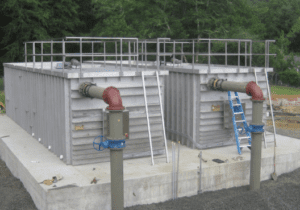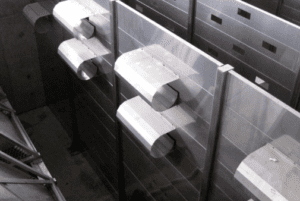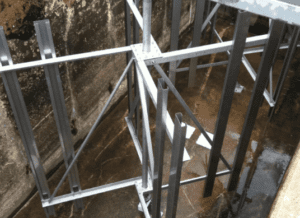Performance Advantages
MRI’s Paddle Wheel Flocculator offers significant advantages, including:
- Versatile, energy efficient and consistent floc production in varying water conditions and temperatures
- All stainless steel construction eliminates the danger of FRP shards entering the flow path and damaging membranes
- When combined with the Hydraulic Final Stage, varying currents created by the rotation of the paddles are eliminated and the Paddle Wheel Flocculator fits almost any water condition
Horizontal Paddle Wheel Flocculator Applications
Since all applications are different, a settleability test, usually a jar test, is performed to determine the rapid mixing and flocculation parameters that will be most efficient. If turbidity and temperature are fairly constant, Paddle Wheel Flocculators are adequate. If conditions vary, a larger range of G-values are required, and MRI’s Vertical Turbine Flocculator should be considered.
Hydraulic Final Stage Alleviates Clarifier Turbulence
All flocculation and settling processes have a high mixing zone (the flocculator) and an extremely quiet zone (the sedimentation basin). MRI’s Hydraulic Final Stage provides a transition channel between the drastically different turbulence of these two areas.
Placing a Hydraulic Final Stage between the flocculator and sedimentation basin has the following advantages:
- Reduces the final stage of G-values to <10sec-1. This will create the final stage of flocculation.
- Eliminates flocculator-created currents from entering the sedimentation basin. Flocculator mixers can cause jumps in the sedimentation basin. Eliminating these jumps improves the settling process.
- Distributes the flow coming out of the flocculators evenly across the sedimentation basin. Where serpentine or over-under flow configurations are used, the flows are distributed evenly, preventing varying velocities in the sedimentation basin.
- Sedimentation that may occur in this area is removed by the scrapers mounted on the Hoseless Cable-Vac™ Sludge Collector.
Employed in the final pre-sedimentation stage, MRI’s hydraulic final stage:









